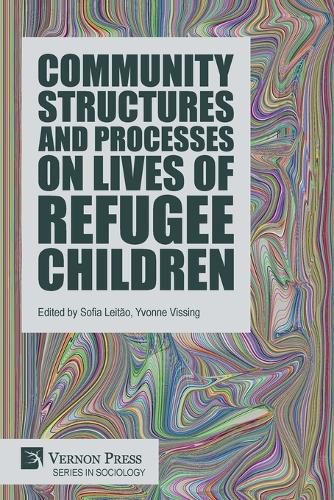Readings Newsletter
Become a Readings Member to make your shopping experience even easier.
Sign in or sign up for free!
You’re not far away from qualifying for FREE standard shipping within Australia
You’ve qualified for FREE standard shipping within Australia
The cart is loading…






This title is printed to order. This book may have been self-published. If so, we cannot guarantee the quality of the content. In the main most books will have gone through the editing process however some may not. We therefore suggest that you be aware of this before ordering this book. If in doubt check either the author or publisher’s details as we are unable to accept any returns unless they are faulty. Please contact us if you have any questions.
Communities around the world face challenges in how to assist the influx of refugees and immigrants, who arrive with only the clothes on their backs. They may have health problems and have experienced violence and trauma before they arrived in their new communities. They require healthcare, housing, education, jobs, financial & material support, and childcare, to name a few. Some arrive with families, but often, children and youth arrive unaccompanied and are in need of special care. Even well-intentioned and resource-rich communities may find themselves taxed as they struggle to help everyone in need. This book is framed by a human rights approach and highlights how social structures and institutional processes impact the lives of refugee and asylum-seeking children. Social institutions around the world tend to experience a similar type of challenge in serving this population. These challenges are examined in this book as recommendations for actions provided. The authored contributions present different perspectives on processes, interactions, policies, practices, and laws embedded in a variety of institutions and community social interactions. It is a reference for researchers, practitioners, and students in its presentation of academic and practitioner approaches to challenges faced by refugee children in different geographic and social contexts. Topics in this book include work on the character of transnational migrant families and communities, uses of new information and communication technologies, international frameworks of humanitarian assistance, social inclusion best practices in the integration of migrant children and unaccompanied minors, and models to provide multidisciplinary services on prevention, integration and rehabilitation integration strategies. Concepts of ACEs (Adverse Childhood Experiences) and HOPEs (Healthy Outcomes from Positive Experiences) are explored, along with lifelong learning as a catalyst for the sustained promotion of safe communities in the context of migration; and individual refugee needs and their family's future wellbeing towards service to refugees that work for the individual.
$9.00 standard shipping within Australia
FREE standard shipping within Australia for orders over $100.00
Express & International shipping calculated at checkout
This title is printed to order. This book may have been self-published. If so, we cannot guarantee the quality of the content. In the main most books will have gone through the editing process however some may not. We therefore suggest that you be aware of this before ordering this book. If in doubt check either the author or publisher’s details as we are unable to accept any returns unless they are faulty. Please contact us if you have any questions.
Communities around the world face challenges in how to assist the influx of refugees and immigrants, who arrive with only the clothes on their backs. They may have health problems and have experienced violence and trauma before they arrived in their new communities. They require healthcare, housing, education, jobs, financial & material support, and childcare, to name a few. Some arrive with families, but often, children and youth arrive unaccompanied and are in need of special care. Even well-intentioned and resource-rich communities may find themselves taxed as they struggle to help everyone in need. This book is framed by a human rights approach and highlights how social structures and institutional processes impact the lives of refugee and asylum-seeking children. Social institutions around the world tend to experience a similar type of challenge in serving this population. These challenges are examined in this book as recommendations for actions provided. The authored contributions present different perspectives on processes, interactions, policies, practices, and laws embedded in a variety of institutions and community social interactions. It is a reference for researchers, practitioners, and students in its presentation of academic and practitioner approaches to challenges faced by refugee children in different geographic and social contexts. Topics in this book include work on the character of transnational migrant families and communities, uses of new information and communication technologies, international frameworks of humanitarian assistance, social inclusion best practices in the integration of migrant children and unaccompanied minors, and models to provide multidisciplinary services on prevention, integration and rehabilitation integration strategies. Concepts of ACEs (Adverse Childhood Experiences) and HOPEs (Healthy Outcomes from Positive Experiences) are explored, along with lifelong learning as a catalyst for the sustained promotion of safe communities in the context of migration; and individual refugee needs and their family's future wellbeing towards service to refugees that work for the individual.